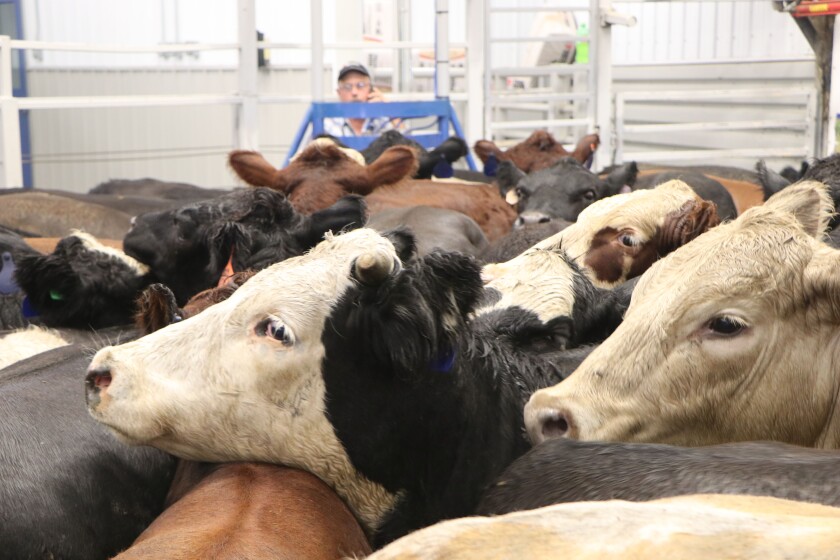Bagley Risk Management : Protecting Your Company Future
Bagley Risk Management : Protecting Your Company Future
Blog Article
Understanding Animals Threat Defense (LRP) Insurance: A Comprehensive Overview
Browsing the world of livestock risk security (LRP) insurance can be a complex venture for many in the farming sector. This kind of insurance supplies a safeguard versus market fluctuations and unexpected scenarios that might affect livestock producers. By understanding the details of LRP insurance, producers can make enlightened choices that might safeguard their operations from economic threats. From exactly how LRP insurance operates to the different insurance coverage options offered, there is much to reveal in this extensive overview that could possibly form the way animals producers come close to threat management in their services.

Exactly How LRP Insurance Coverage Functions
Periodically, comprehending the technicians of Livestock Risk Defense (LRP) insurance coverage can be complicated, yet damaging down just how it functions can offer clearness for farmers and herdsmans. LRP insurance policy is a threat monitoring device designed to protect livestock producers versus unanticipated rate decreases. It's vital to keep in mind that LRP insurance policy is not an earnings warranty; rather, it focuses exclusively on rate risk security.
Qualification and Coverage Options

When it comes to protection alternatives, LRP insurance supplies producers the versatility to pick the coverage level, protection duration, and recommendations that ideal suit their danger monitoring needs. Coverage levels generally vary from 70% to 100% of the anticipated finishing value of the insured livestock. Producers can likewise pick coverage periods that straighten with their production cycle, whether they are guaranteeing feeder livestock, fed cattle, swine, or lamb. Recommendations such as price danger security can additionally customize protection to secure versus damaging market variations. By recognizing the qualification standards and insurance coverage alternatives readily available, animals manufacturers can make enlightened choices to handle danger successfully.
Advantages And Disadvantages of LRP Insurance Policy
When examining Livestock Risk Defense (LRP) insurance, it is vital for livestock producers to consider the benefits and disadvantages integral in this danger administration device.

One of the main benefits of LRP insurance is its capability to give security versus a decline in animals prices. Furthermore, LRP insurance supplies a degree of versatility, enabling manufacturers to customize protection degrees and policy durations to fit their certain demands.
Nonetheless, there are additionally some downsides to take into consideration. One constraint of LRP insurance is that it does not secure against all types of dangers, such as condition outbreaks or natural catastrophes. Furthermore, premiums can often be costly, particularly for producers with huge animals herds. It is crucial for manufacturers to thoroughly assess their individual threat exposure and economic scenario to establish if LRP insurance policy is the ideal danger management tool for their operation.
Recognizing LRP Insurance Policy Premiums

Tips for Taking Full Advantage Of LRP Conveniences
Making the most of the advantages of Animals Risk Protection (LRP) insurance coverage calls visit the site for tactical preparation and aggressive risk administration - Bagley Risk Management. To take advantage of your LRP coverage, think about the adhering to suggestions:
Routinely Analyze Market Conditions: Remain notified concerning market patterns and price variations in the animals market. By keeping an eye on these variables, you can make educated choices concerning when to purchase LRP protection to secure versus prospective losses.
Establish Realistic Coverage Degrees: When picking coverage degrees, consider your manufacturing costs, market value of animals, and possible threats - Bagley Risk Management. Establishing sensible protection levels makes sure that you are adequately protected without paying too much for unneeded insurance coverage
Expand Your Protection: Rather than relying solely on LRP insurance policy, take into consideration expanding your danger administration methods. Integrating LRP with other risk monitoring devices such as futures contracts or options can give detailed protection against market unpredictabilities.
Evaluation and Adjust Insurance Coverage Consistently: As market problems change, occasionally evaluate your LRP coverage to guarantee it straightens with your existing risk exposure. Readjusting protection levels and timing of purchases can aid enhance your risk security method. By adhering to these ideas, you can maximize the advantages of LRP insurance and guard your livestock operation versus unforeseen threats.
Conclusion
Finally, livestock danger protection (LRP) insurance coverage is a valuable tool for farmers to take care of the financial dangers related to their livestock operations. By recognizing top article how LRP functions, qualification and coverage choices, along with the advantages and disadvantages of this insurance policy, farmers can make informed choices to shield their source of incomes. By carefully taking into consideration LRP premiums and carrying out techniques to make the most of advantages, farmers can minimize potential losses and guarantee the sustainability of their procedures.
Livestock manufacturers interested in getting Livestock Danger Defense (LRP) insurance coverage can check out an array of qualification standards and insurance coverage choices customized to their details animals procedures.When it comes to protection options, LRP insurance provides manufacturers the versatility to pick the insurance coverage degree, insurance coverage duration, and recommendations that finest fit their risk management needs.To grasp the complexities of Livestock Threat Defense (LRP) insurance policy completely, comprehending the elements influencing LRP insurance costs is crucial. LRP insurance policy premiums are try this site identified by different elements, consisting of the protection level chosen, the anticipated cost of livestock at the end of the insurance coverage duration, the type of livestock being guaranteed, and the length of the coverage duration.Evaluation and Adjust Insurance Coverage Routinely: As market problems change, periodically review your LRP coverage to ensure it straightens with your existing risk exposure.
Report this page